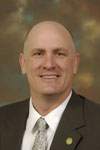A century ago, wildlife conservation in the United States was focused on the protection and improvement of our lands and wildlife populations. Game wardens were hired and charged with enforcing new regulations on wildlife take, designed to ensure that wildlife species would remain abundant for future generations. Hatcheries were developed to provide more opportunities for fishing in the nation’s vast network of lakes and streams. Hunting, fishing and exploring the outdoors were considered hardy sports that improved the national character and provided opportunities for individuals to prove their worth. These examples and many others were made possible by sportsmen and women’s willingness to pay directly for conservation.
Much has changed over the last 100 years, but the value of wildlife and the outdoor experience has not. Today, Colorado Parks and Wildlife manages the largest elk herd in North America, raises more than 90 million fish annually and is busy tracking disease, mitigating invasive species and educating outdoor enthusiasts on how to safely recreate on Colorado’s rivers and in the backcountry. Simultaneously, Colorado’s strong economy is bringing in new residents who want to be here because of Colorado’s natural beauty, diverse landscapes and access to outdoor recreation. Cities have developed where small towns had been and a growing population is filling in all corners of Colorado’s landscape. Oil and gas development is expanding as new technology allows access to resources that were previously impossible to extract. These sweeping changes have altered the landscape upon which Colorado’s wildlife depends. However, none of these trends change the fact that hunters and anglers continue to pay for the management of fish and wildlife.
As threats to wildlife and the complexities of management increase, Colorado Parks and Wildlife continues to adapt to these challenges with an ever-shrinking revenue dollar by becoming more efficient and scaling back on services and programs. In the past several years alone, we have cut more than $40 million out of our wildlife program budgets and defunded more than 50 wildlife positions.
At the end of 2011, the Division of Wildlife merged with Colorado State Parks to create Colorado Parks and Wildlife. The merger allowed the Parks and Wildlife Commission to take advantage of additional efficiencies and reduce costs; it also provided opportunity for two of Colorado’s premier outdoor recreation agencies to speak with one voice. Our wildlife managers serve and protect as their game warden counterparts did a century ago, while taking on new responsibilities such as education, land-use planning and biological monitoring. Similarly, park rangers are patrolling and keeping our state parks safe while introducing people to unique outdoor recreation experiences. The roles in which our employees serve have expanded to include education specialists, researchers, biologists and customer service representatives to name a few — all designed to serve Colorado more effectively. The combination of our skills allows us to be stronger as an agency, and better at not only managing our natural resources, but also reminding people why that management is important and providing more opportunities to get outdoors.

Although the merger allowed for certain efficiencies, it was not a magic bullet to solve budgetary problems on either “side of the agency.” The two agencies merged, but the funding sources that provide support remain separate, as mandated by state and federal law. The Pittman-Robertson and Dingell-Johnson Acts passed 78 and 65 years ago, respectively, require that revenues collected through hunting and fishing licenses must fund wildlife programs and cannot be used for unrelated purposes. As a result, our agency’s budgets remain separate. Revenues that support both sides of our agency budget, wildlife programs and parks, have not kept pace with the cost of doing business today. Historically, Colorado fishing and hunting fees have been increased every 7-10 years. Our last resident price increase was passed by the legislature in 2005; the one before that was approved in 1988. Part of the reason why we have been able to extend the period between increases is because nonresident big-game licenses have been tied to the Consumer Price Index (CPI) since 2000.
Nonresident big-game license fees increase slightly in most years, helping us to keep revenue in line with costs to a degree. However, as a result of CPI, resident big-game hunters are paying less now than they have historically when compared to their nonresident counterparts. Resident fees are also low in comparison to historic prices and resident prices in other states. A resident elk hunter in 1984 paid today’s equivalent of $66 for an elk tag; in 1955 his father would have paid $88. Colorado’s prices are also typically below the average when looking at our neighboring Western states.
Although potentially compelling, none of these facts makes it any easier to open our wallets and support increasing fees to hunt and fish. Colorado’s economy is growing, but that doesn’t mean that folks don’t have to work hard to raise their families and earn a living wage. However, hunters and anglers have always been strong supporters of wildlife and habitat conservation and are the reason we enjoy such abundant fish and wildlife populations today. Even as a shrinking percentage of Colorado’s booming population, we have the ability to raise our voices and speak about what Colorado means to us. The Colorado we all cherish has healthy wildlife populations, open spaces and abundant outdoor recreational opportunities that allow everyone to explore our natural world and discover themselves, in no small part made possible by the financial contributions of sportsmen and women. How much does that Colorado mean to you?
 Written by Bob Broscheid.
Broscheid is an avid outdoorsman who loves Colorado and its abundant
natural and recreational resources. Broscheid took the helm at Colorado
Parks and Wildlife in 2013.
Written by Bob Broscheid.
Broscheid is an avid outdoorsman who loves Colorado and its abundant
natural and recreational resources. Broscheid took the helm at Colorado
Parks and Wildlife in 2013.



No comments:
Post a Comment